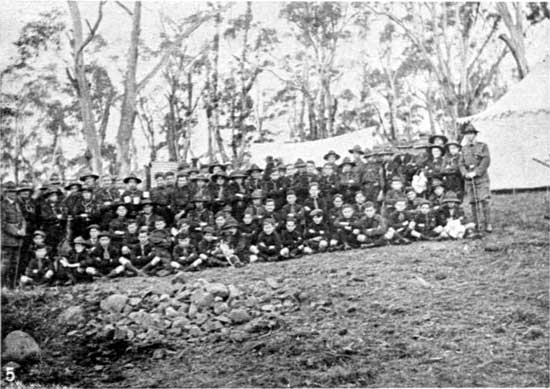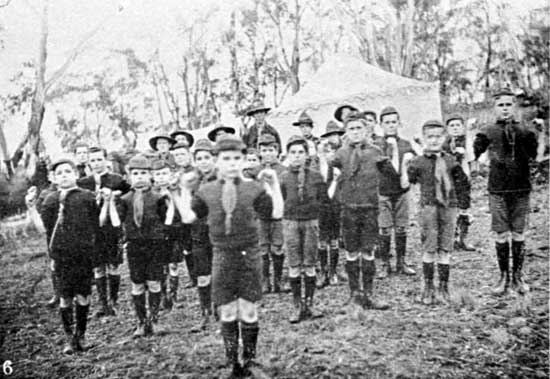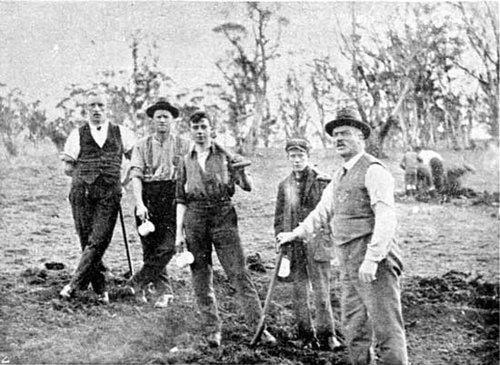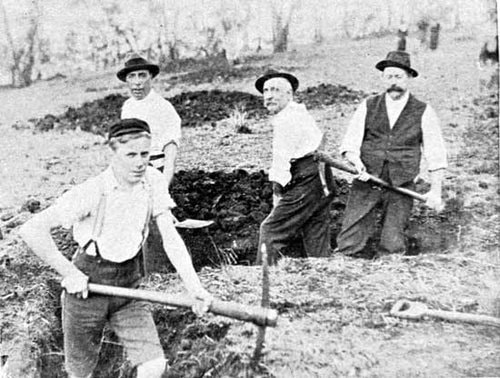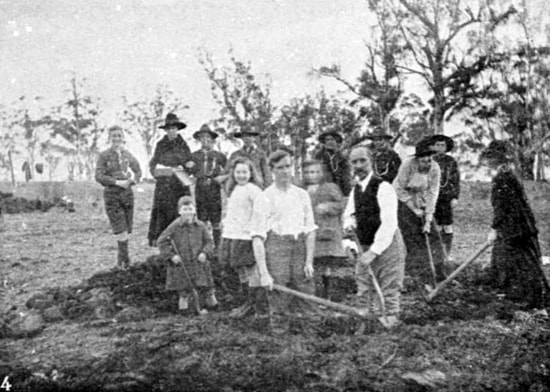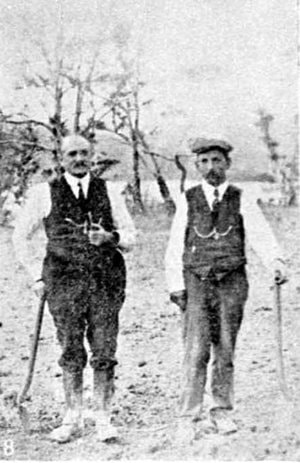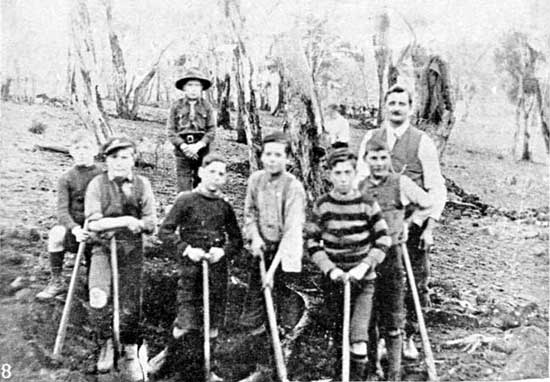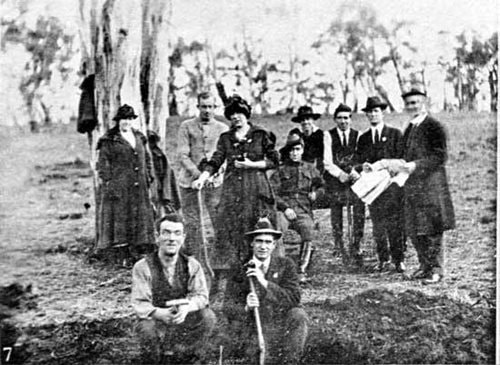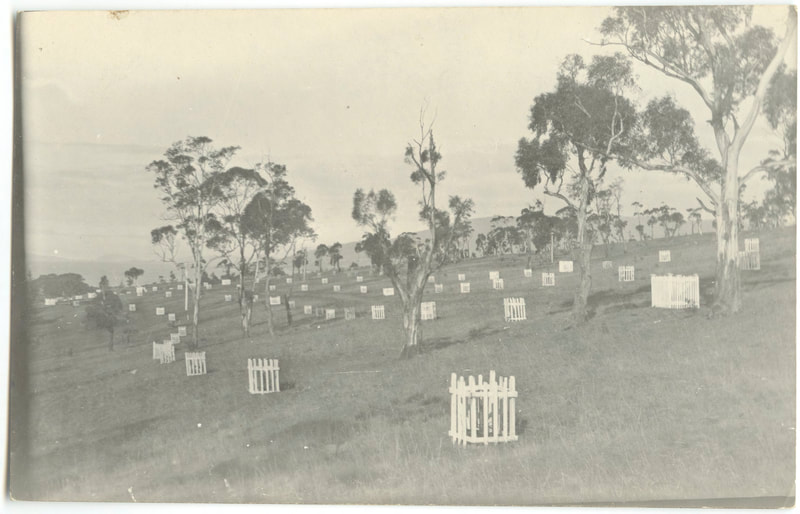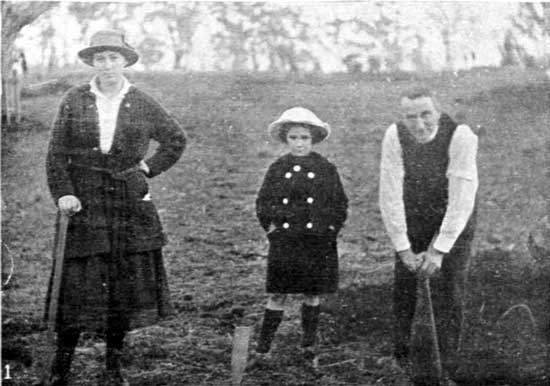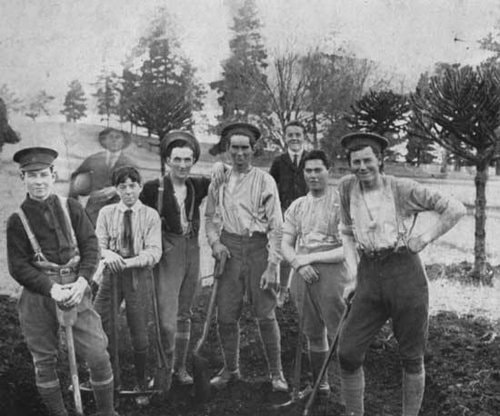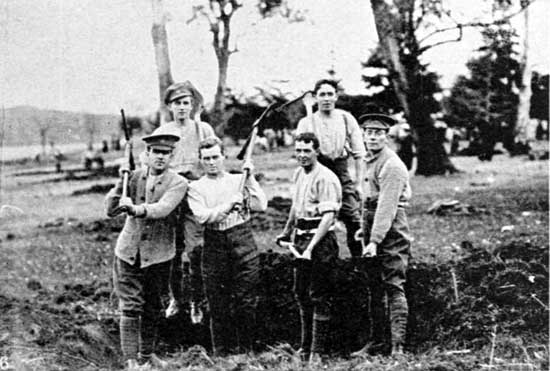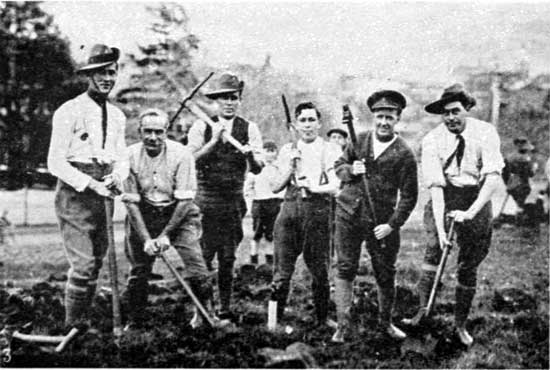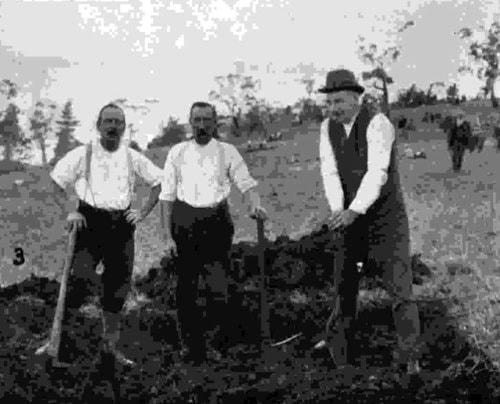1918-1919: Soldiers Memorial Avenue was begun. The aim of Soldiers Memorial Avenue was to have an avenue of trees and a plaque commemorating each fallen soldier in WW1.
533 Tasmanians were killed in action in WW1. From a population of 200,000 Tasmanians.
Three types of cedar were planted. Himalayan cedar, Atlas cedar, Blue Atlas. Marked with wooden name boards. These trees struggled to flourish on the Domain. Many trees died and many plaques were lost or broken.
The trees near the start of the avenue commemorate soldiers who died in the Gallipoli campaign. The first tree commemorates Private Arthur Adams who was believed to be the first Tasmania killed at Gallipoli. Ten Tasmanians were believed to have died on the first day.
2002: Restoration of the avenue began. Planting trees and replacing plaques when needed. Since 2008 all replacement trees have been Lebanese cedar.
At the northern end of Soldiers Memorial Avenue trees were removed to make way for crossroads ovals and replanted elsewhere. The ovals are called Soldiers Memorial Ovals.
Over the years the conflict between the native environment and the introduced trees have been constantly discussed. The aim is to have healthy trees representing each fallen soldier surrounded by healthy natural flora and fauna.
Today the Friends of Soldiers Memorial Avenue speaks and acts on behave of the avenue. They have a website which helps you find specific soldiers. Most of the soldiers were from the Hobart area. All of the soldiers died a long way away. A living growing tree which normally outlives the fallen soldier seems a good way of remembering them.
https://www.soldiersmemorialavenue.org.au/
533 Tasmanians were killed in action in WW1. From a population of 200,000 Tasmanians.
Three types of cedar were planted. Himalayan cedar, Atlas cedar, Blue Atlas. Marked with wooden name boards. These trees struggled to flourish on the Domain. Many trees died and many plaques were lost or broken.
The trees near the start of the avenue commemorate soldiers who died in the Gallipoli campaign. The first tree commemorates Private Arthur Adams who was believed to be the first Tasmania killed at Gallipoli. Ten Tasmanians were believed to have died on the first day.
2002: Restoration of the avenue began. Planting trees and replacing plaques when needed. Since 2008 all replacement trees have been Lebanese cedar.
At the northern end of Soldiers Memorial Avenue trees were removed to make way for crossroads ovals and replanted elsewhere. The ovals are called Soldiers Memorial Ovals.
Over the years the conflict between the native environment and the introduced trees have been constantly discussed. The aim is to have healthy trees representing each fallen soldier surrounded by healthy natural flora and fauna.
Today the Friends of Soldiers Memorial Avenue speaks and acts on behave of the avenue. They have a website which helps you find specific soldiers. Most of the soldiers were from the Hobart area. All of the soldiers died a long way away. A living growing tree which normally outlives the fallen soldier seems a good way of remembering them.
https://www.soldiersmemorialavenue.org.au/

